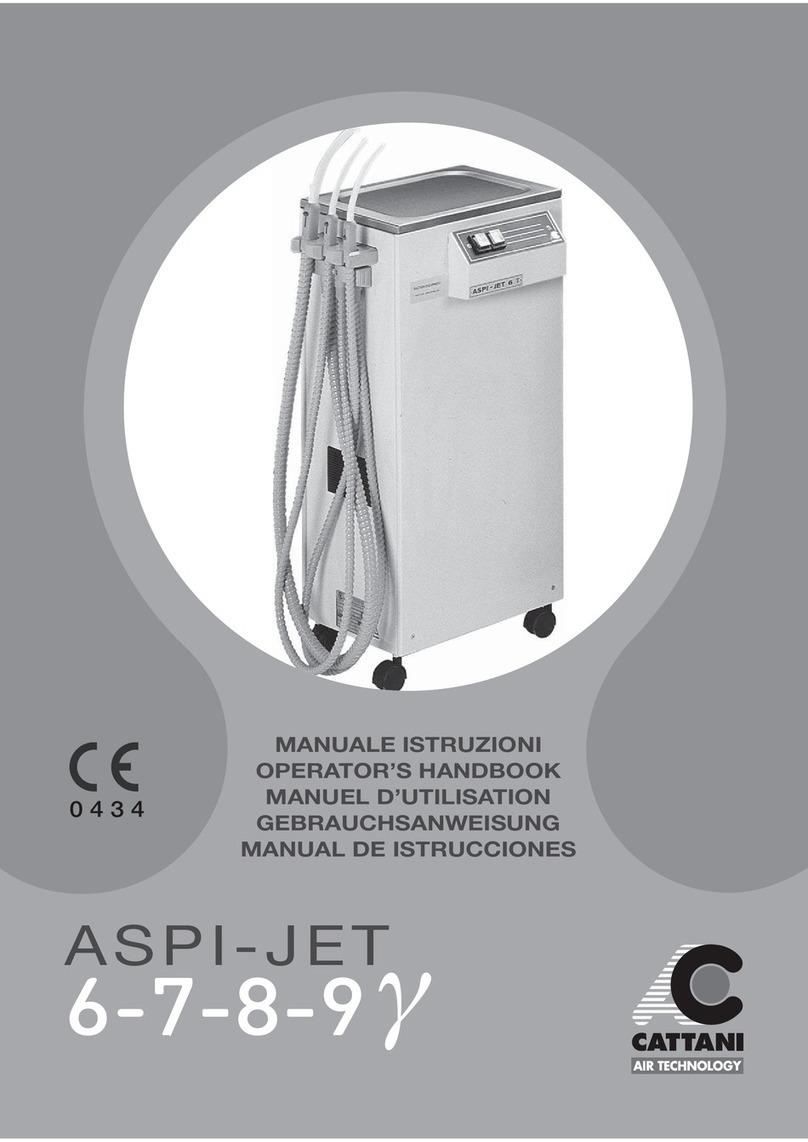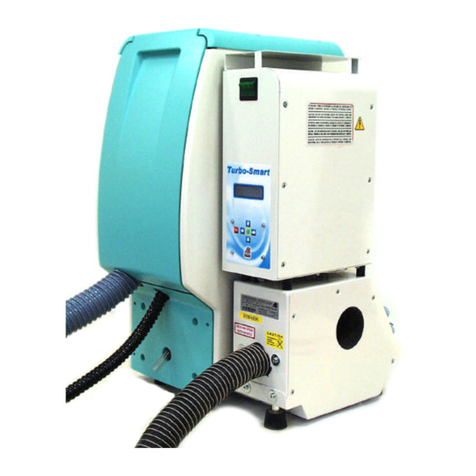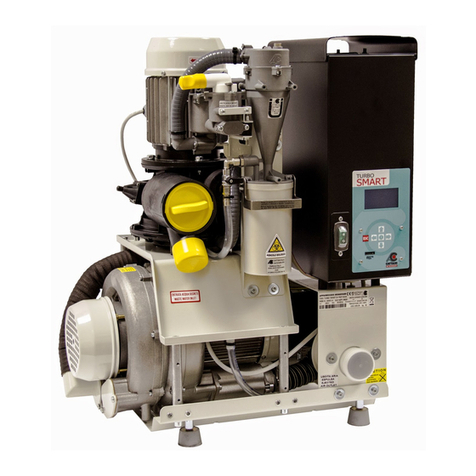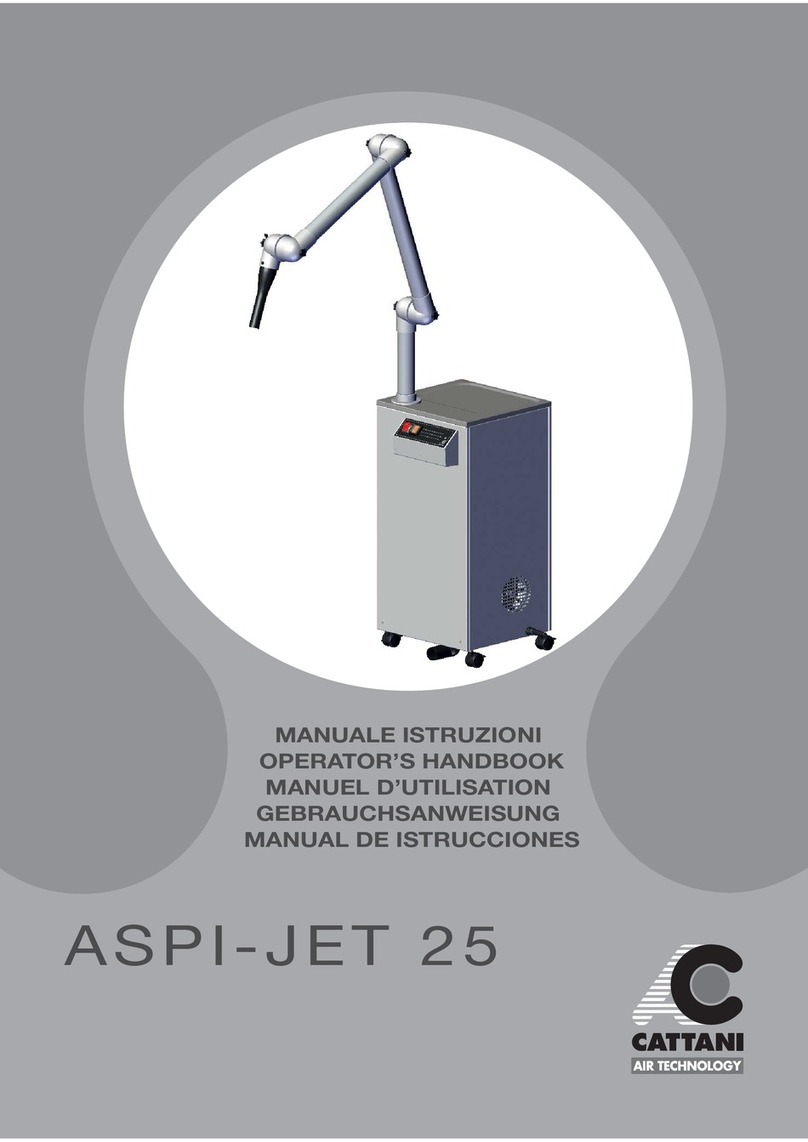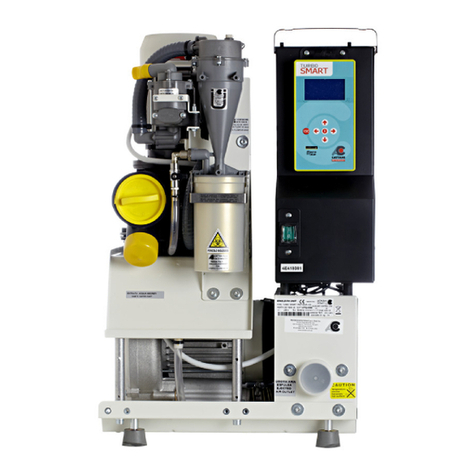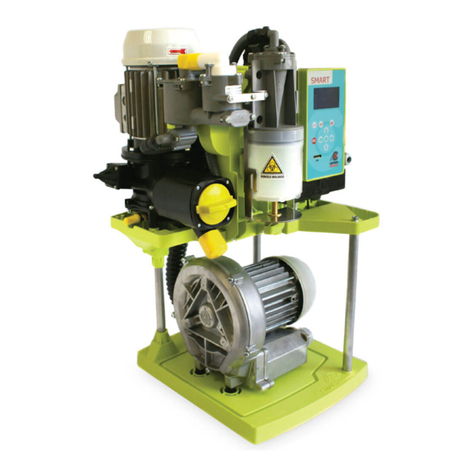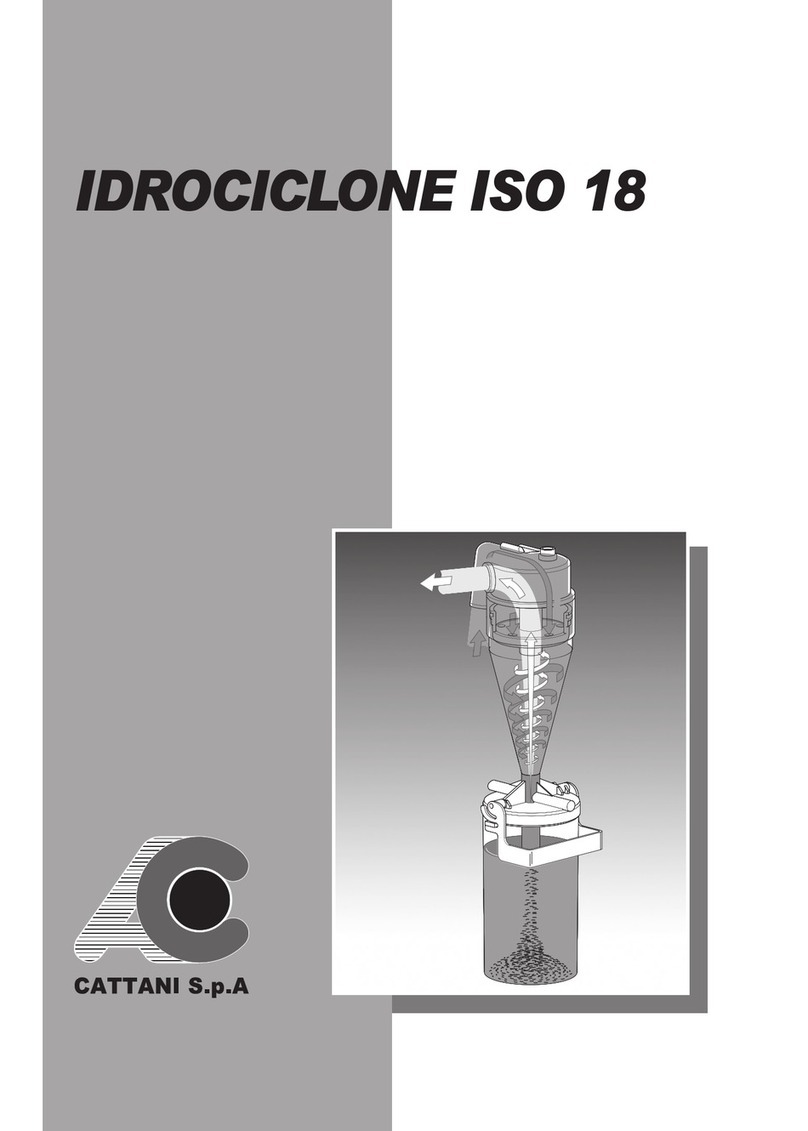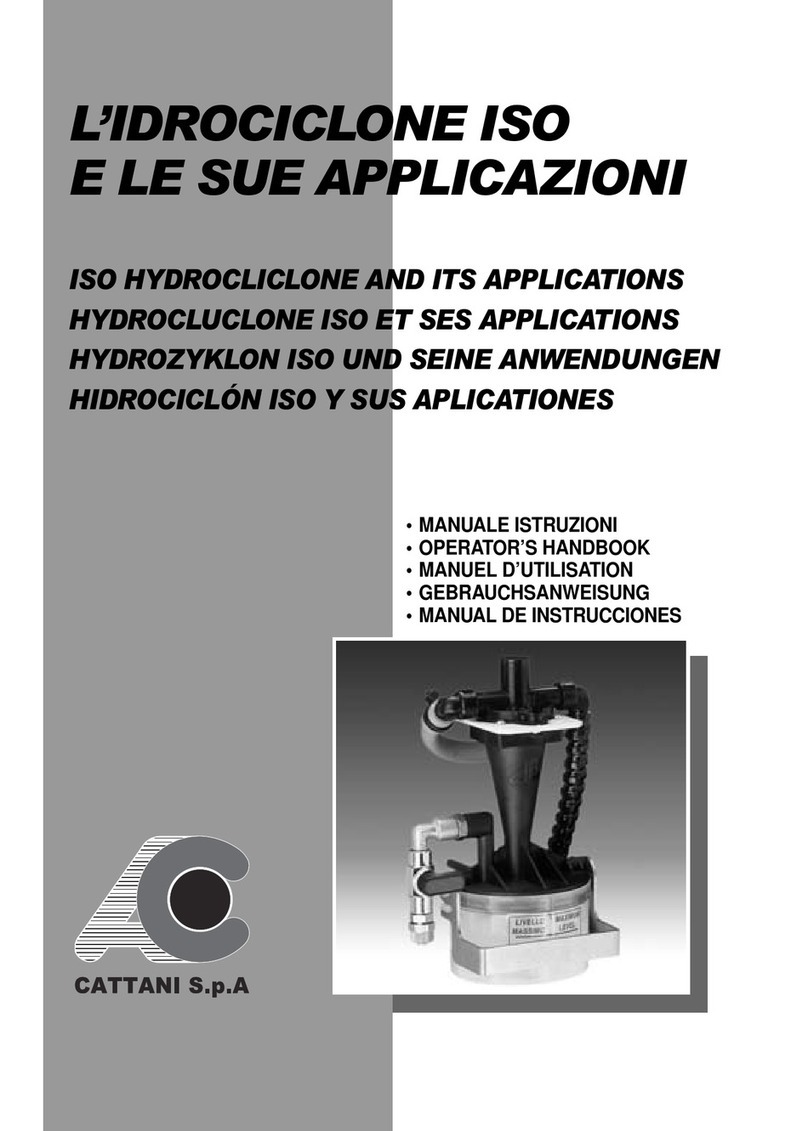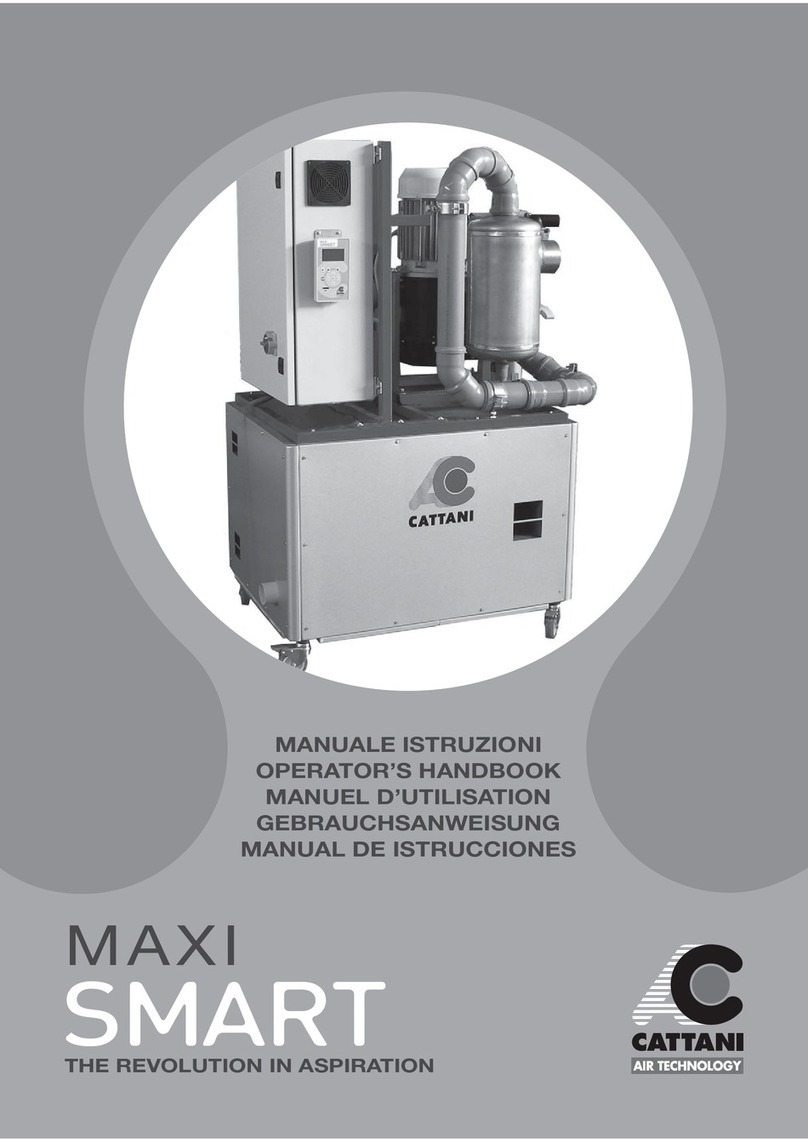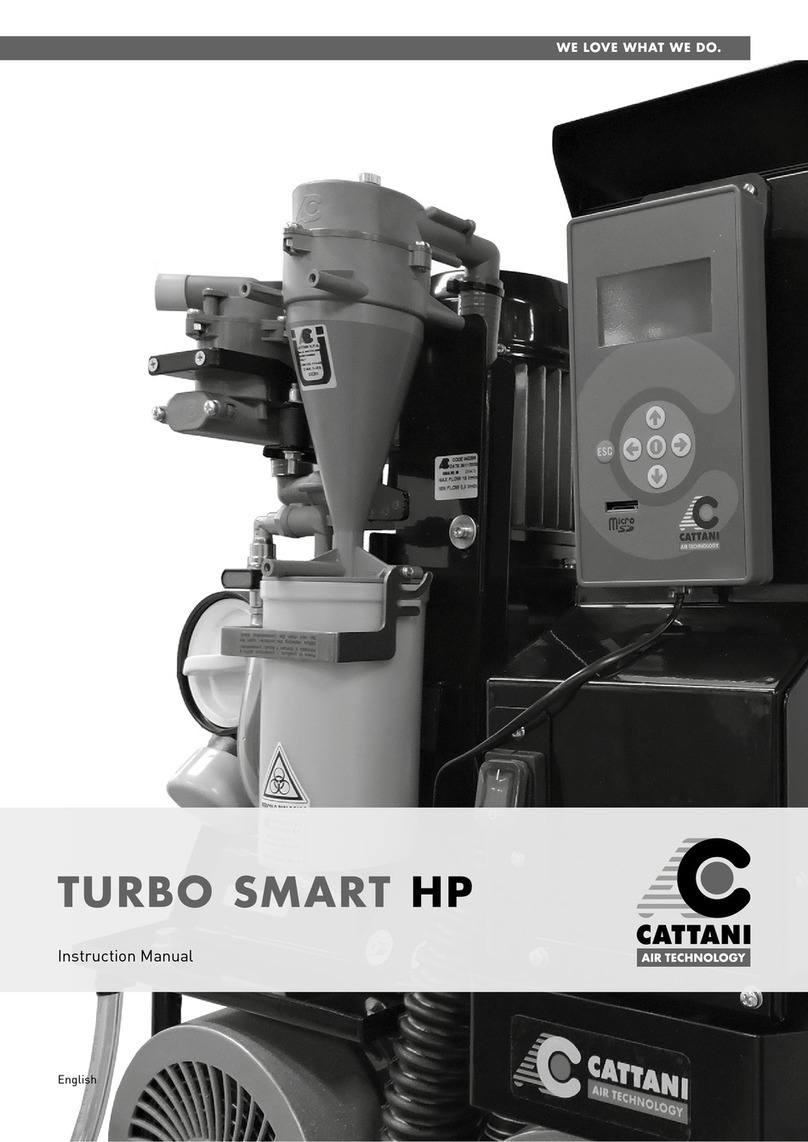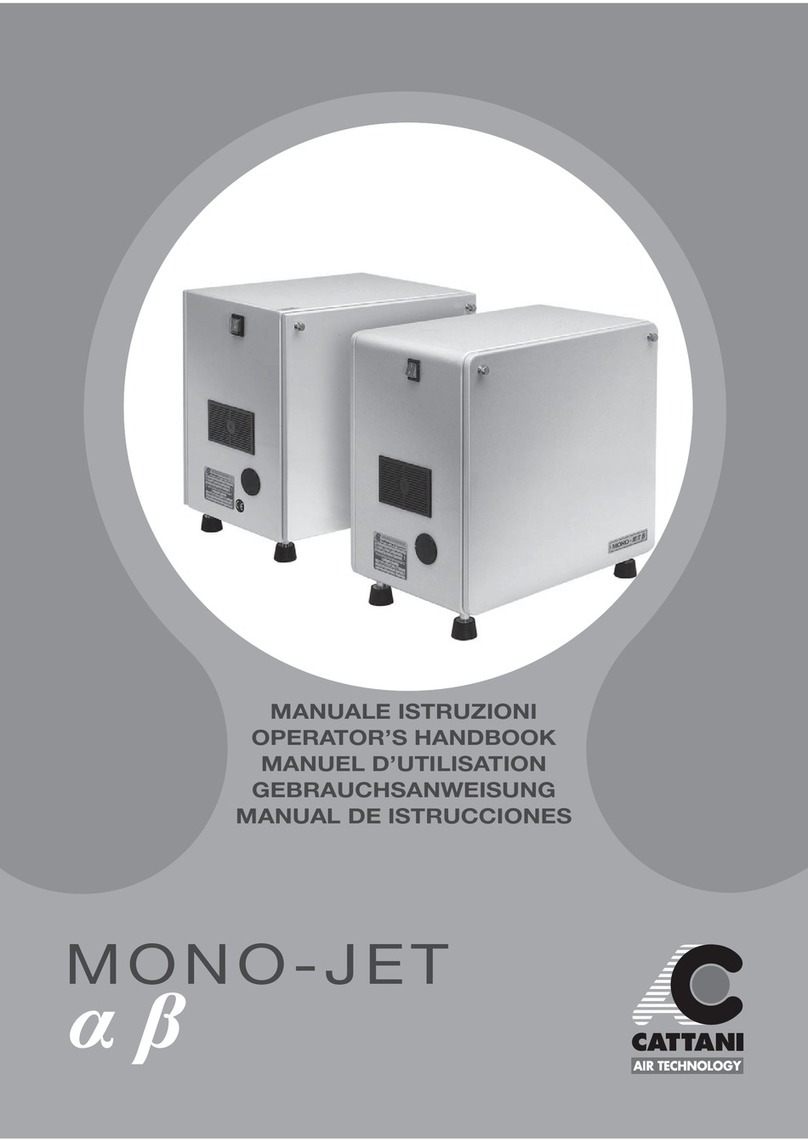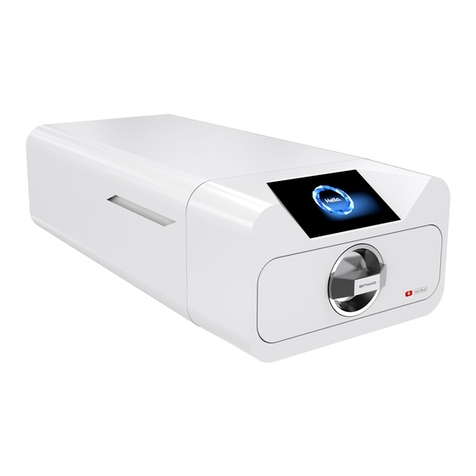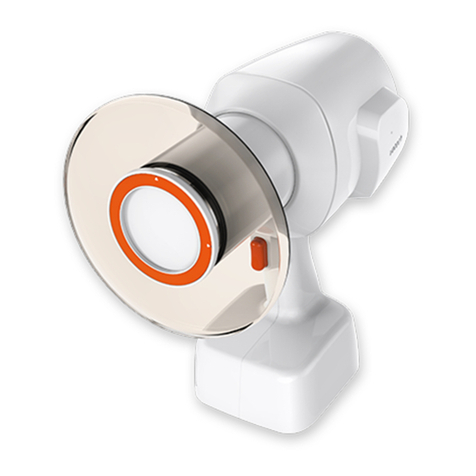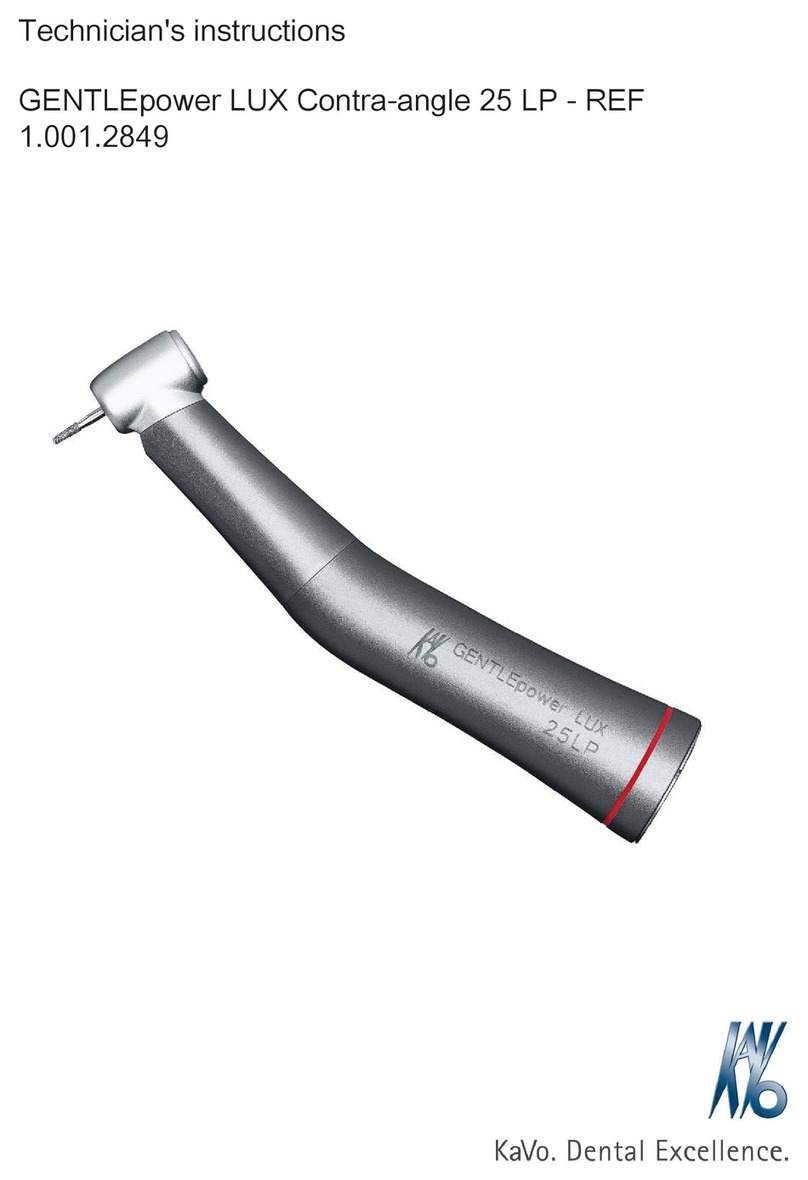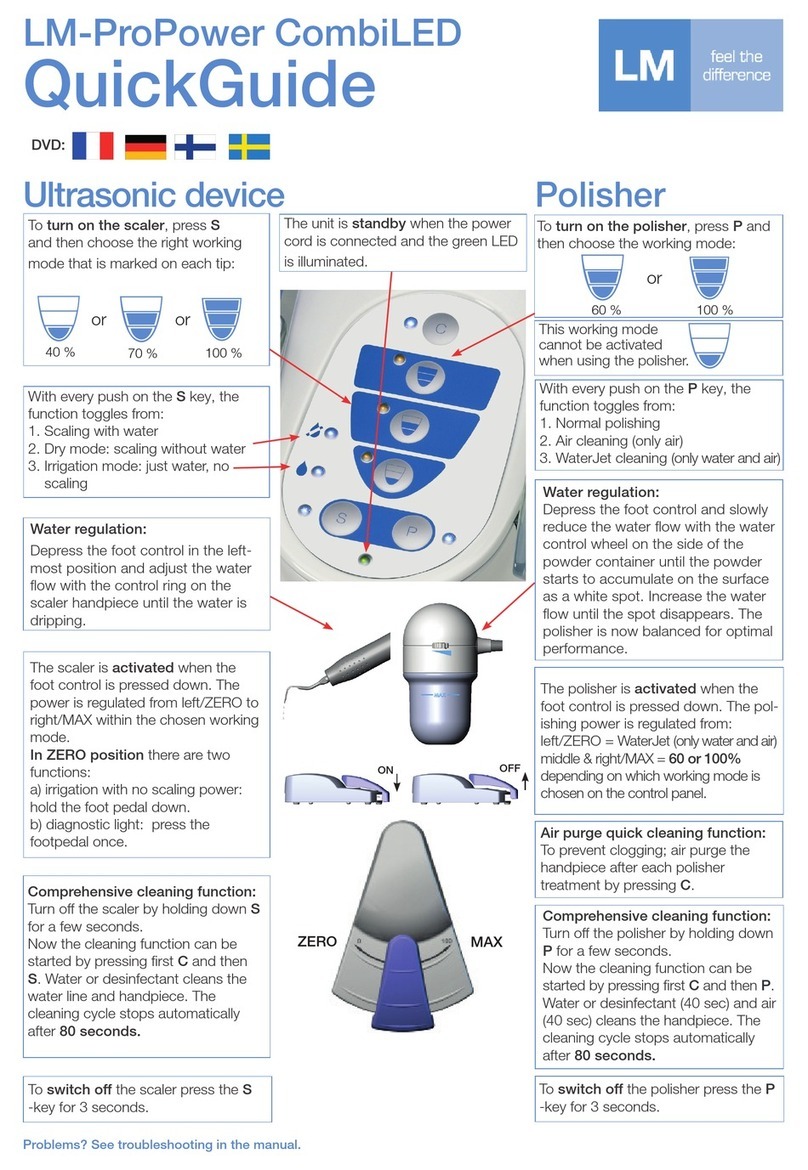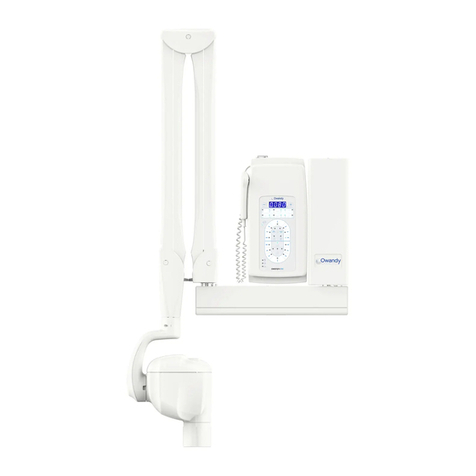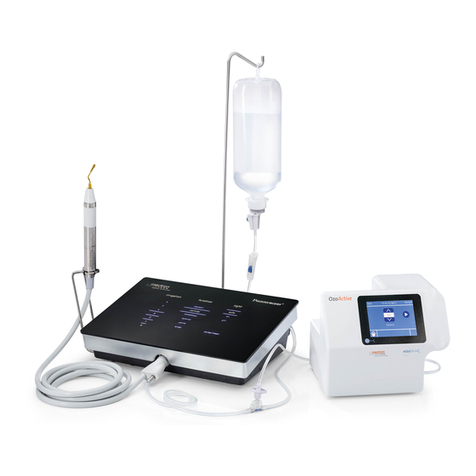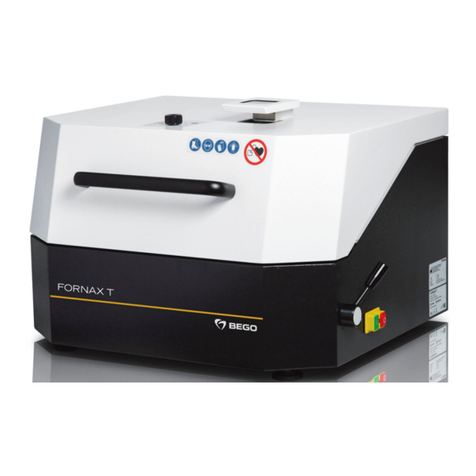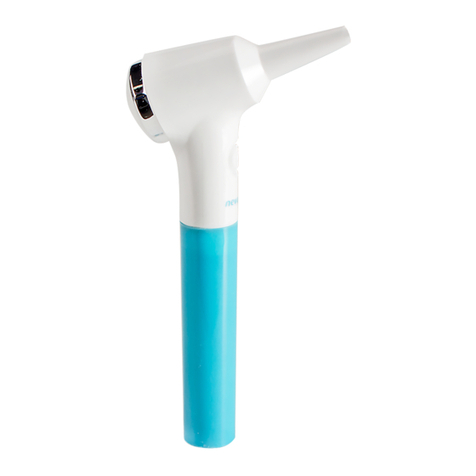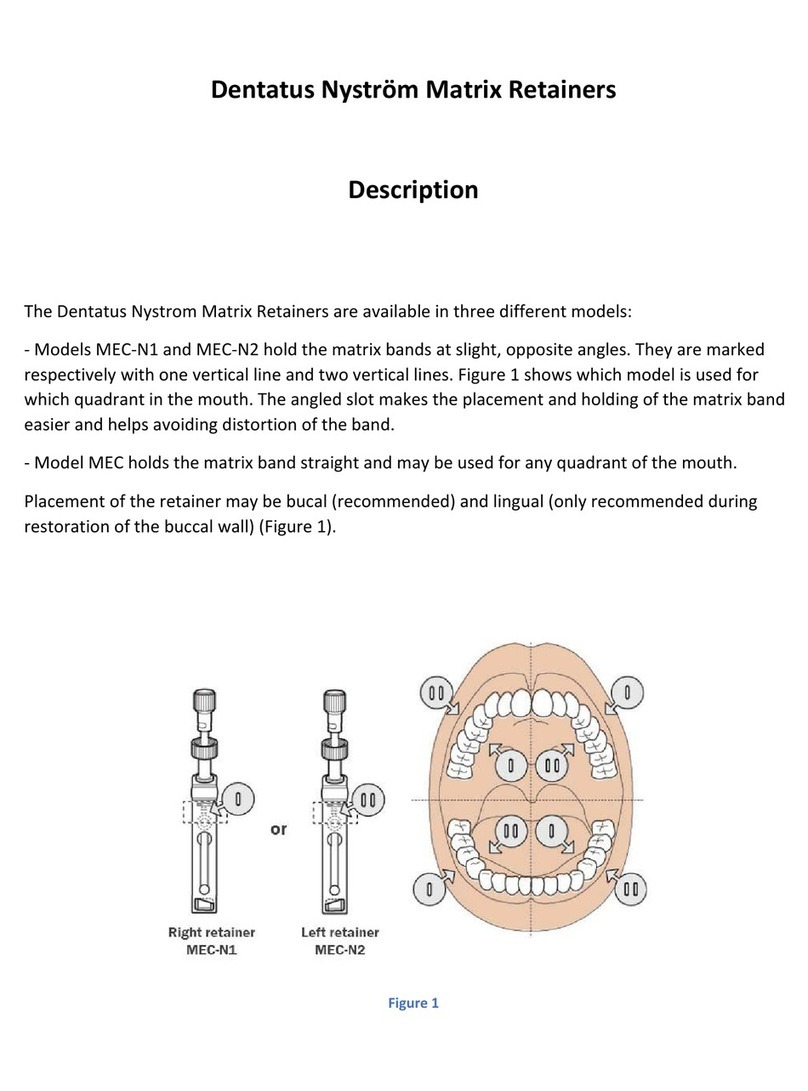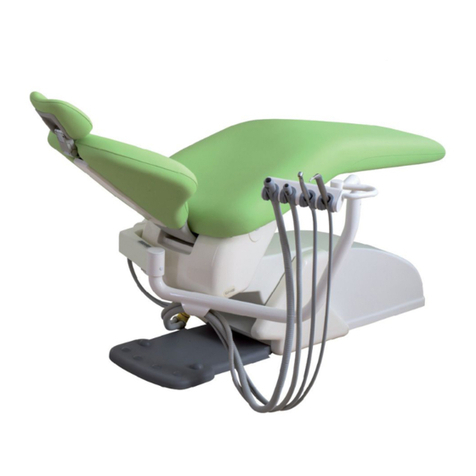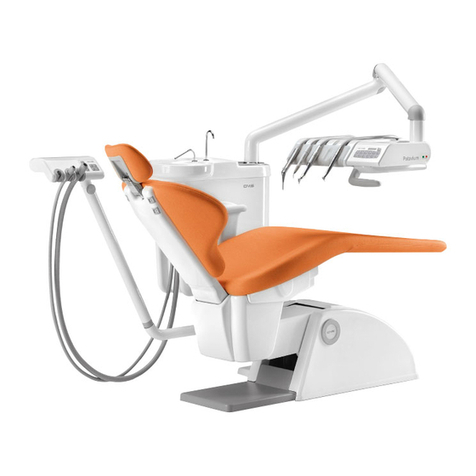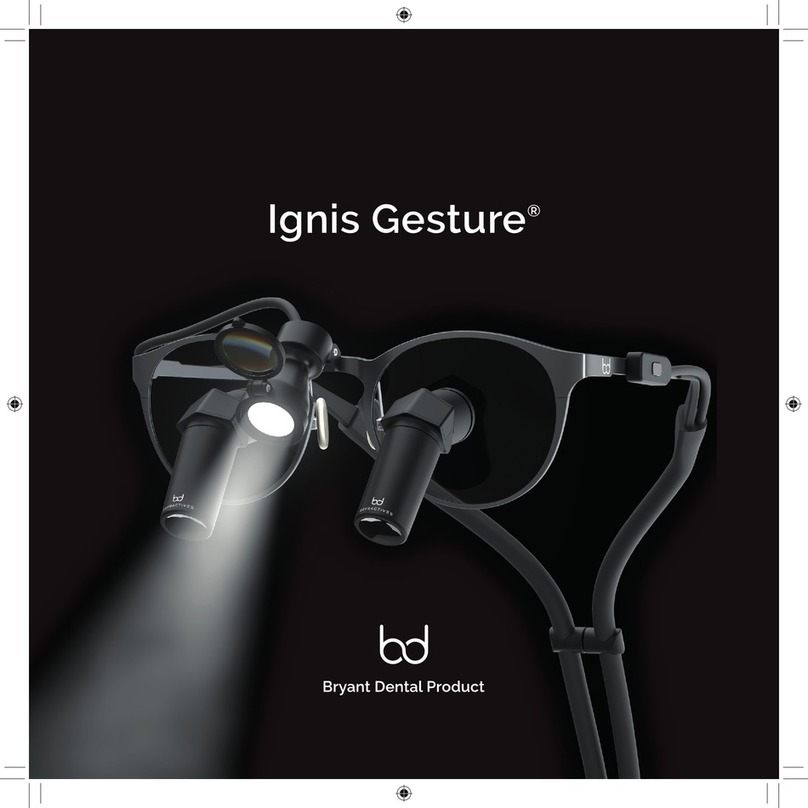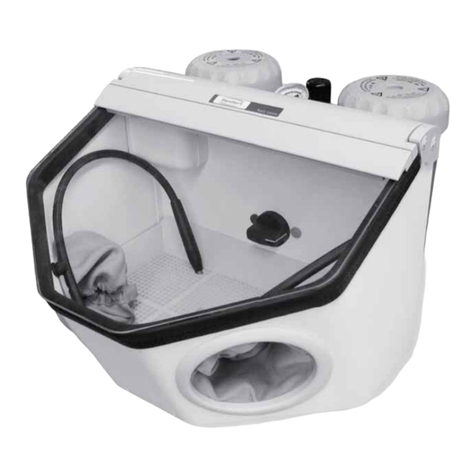
10
cod: ed. 10-2021
GENERAL FEATURES
GENERAL INSTALLATION AND STARTING
TIPS
Our mobile aspirators supply a good aspiration
independent from the dental unit; the trolleys allow
use in any working position. The aspirator type 6
γ(canister to be emptied manually) can be moved
quickly from one surgery to another; for this reason
it can be used as an emergency aspirator to support
the centralized plant or the aspiration system of
the dental unit. Aspi-Jet 7 γis fitted with automatic
drainage, it must be connected to the waste of the
building. Besides the general features of Aspi-Jet 7
γ, Aspi-Jet 8 γand Aspi-Jet 9 γoffer some additional
function: water supply to the tumbler and spittoon
(cuspidor) with rinsing respectively. The switches
which control the above functions are marked with
symbols and are located on the front panel:
- a tumbler indicates the water supply on type 8 γ;
- a tap indicates rinsing of the spittoon on type 9 γ.
GENERAL FEATURES
GENERAL INSTALLATION AND STARTING TIPS
• Unpack the appliance following the instructions
shown on the package.
• Dispose of the package in compliance with
regulations.
• Verify that the appliance has not been damaged
during transport.
• Do not connect damaged appliances to the mains.
• Do not use extension leads, multiple plugs or
sockets.
• Ascertain that the feeding line is adequate to feed
the machine.
• Assembly of the aspirator must be carried out
by an expert, with suitable equipment and special
training. The installer should read the equipment
manual, perform commissioning and instruct the
users in the use and routine maintenance of the
new machine while it is still unused and therefore
not contaminated.
• The air exhausted by the aspiration system should
be filtered, with a special certified antibacterial filter
available on request, and expelled to the outside.
• After installation, perform the required safety and
operating tests.
• Arrange for periodical inspection of the equipment.
This will not only prevent stoppage of a chair or
of the whole surgery, but is also a way to prevent
injuries and accidents.
• You can find all our updated manuals at our
website: www.cattani.it. We recommend that you
consult them, especially for updates on the subject
of safety.
